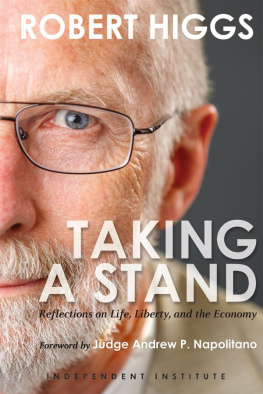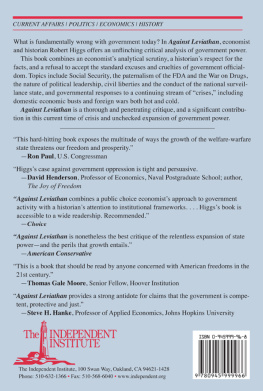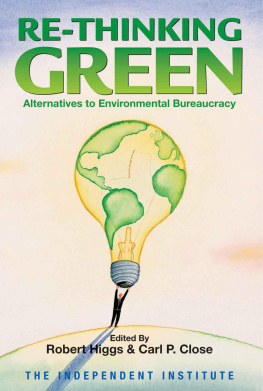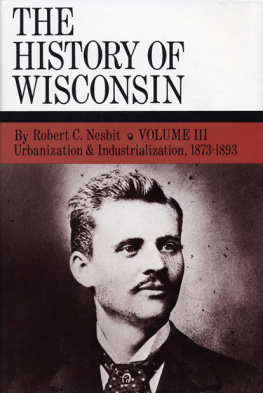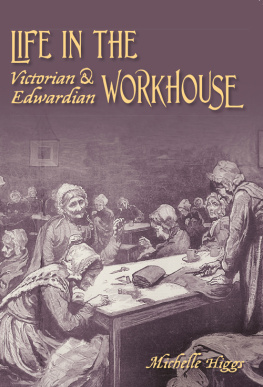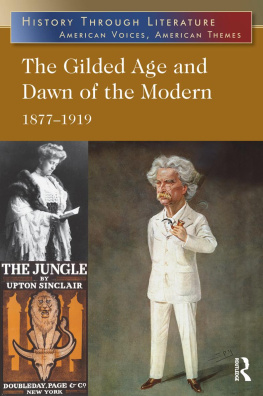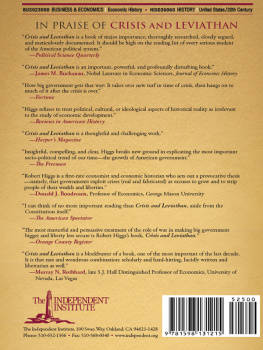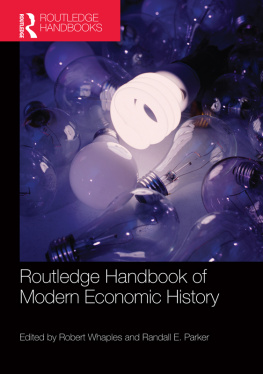THE TRANSFORMATION
OF THE AMERICAN ECONOMY,
1865-1914
AN ESSAY IN INTERPRETATION

THE
TRANSFORMATION
OF THE
AMERICAN
ECONOMY,
1865-1914
AN ESSAY IN INTERPRETATION

ROBERT HIGGS
UNIVERSITY OF WASHINGTON
LvMI
MISES INSTITUTE

Copyright 1971 by John Wiley & Sons, Inc.
Preface to 2011 Edition Copyright 2011 by the Ludwig von Mises Institute
This reprint is published under the Creative Commons Attribution License 3.0.
Ludwig von Mises Institute
518 West Magnolia Avenue
Auburn, Alabama 36832 U.S.A.
mises.org
ISBN 978-1-61016-240-1

PREFACE
TO THE 2011 EDITION
This book, my first, was composed for the most part in 1969 and 1970 and published in 1971, exactly forty years ago. At that time, I was in my mid-twenties and had just completed my work for the Ph.D. degree in economics at the Johns Hopkins University. At Hopkins, I had been trained entirely along the lines of the neoclassical synthesis that, at that time, reigned supreme in the best U.S. universities. This approach to economic analysis rests on a positivistic epistemological foundation: theory serves as a source of empirically testable hypotheses and, in the event that the data do not refute the hypotheses, as a framework for understanding the empirical observations. This methodological understanding was not so much taught as presumed, and students absorbed it by osmosis from their teachers and from the articles and books their professors assigned.
The arguments presented in this book rest explicitly on such an approach. Indeed, its young author carries water for neoclassical economics proudly, with no signs of any misgiving about the approach as such, but only cautions about its misapplication or about unwarranted conclusions derived from it. Even at a tender age, I had learned to be careful about the data used in empirical tests and to take care not to claim too much for the conclusions reached in such analysis. Yet, at that time, I entertained no doubtsindeed, my teachers had never given me any reason for doubtabout the correctness of this way of doing economic analysis.
Hence, the book brims with statements about theories from which testable hypotheses may be derived and about the tests conducted to determine whether the data refute the hypotheses and therefore call into question the underlying theory, or model. Although the book presents hardly any formal econometrics, much of its content represents my translation of formal econometric findings into language understandable by readers untrained in economic theory and statistical inference.
When the book was composed, the so-called New Economic History, or cliometrics, was riding high among academic economic historians, and I was proud to go forth as one of the young knights doing battle in the crusade to remake the study of economic history along more scientific linesto make economic history not the poor stepchild of economics, as it had long been, but a field of applied economics fully entitled to stand alongside other well-established fields, such as labor economics, public finance, and international trade. We cliometricians sought to correct the many errors committed over the years by historians untrained in economics. Although, to be sure, many such errors cried out for correction, I later came to see in retrospect that we were much too full of ourselves and that wecertainly Istill had much to learn about many things.
As soon as I began my academic career, I started to learn these lessons. In part, this self-education took the form of learning how to work as a more skillful craftsman in the cliometric workshop. But in another part my learning carried me on a long journey away from my initial training in and commitment to the positivistic epistemological foundation of neoclassical economics. Indeed, I would eventually conclude that my initial acceptance of this approach was a mistake, and I would come to see the methodological practice of mainstream, neoclassical analysis not as a form of science, but as a form of scientisma misapplication of methods suitable for studying material nature but unsuitable for studying human action. My journey away from neoclassical epistemology began with my reading of works by F.A. Hayek, which in due course led me to works by Ludwig von Mises and other economists writing in the Austrian tradition. Here I discovered an approach to economic analysis that I found far more convincing than the one I had followed in the early years of my career.
So, reading through my Transformation of the American Economy after forty years, I have the eerie feeling that despite its familiarity, it was written by someone else. I no longer stand by the books methodological pronouncements or by much of what it represents as modern economic theory. Yet, I do not want to apologize too much. A great deal of the economic analysis still seems sound to me; after all, in the area known as applied microeconomics, the neoclassicals and the Austrians hold similar views in regard to their basic understanding of how many actions and events are interrelated. And even in regard to the econometrics on which I relied for the first fifteen or twenty years of my career, I have come to believe that not all of my work (and others work along similar lines) was for naught. I now believe, however, that inferential statisticseconometric tests of hypotheseshave no defensible place in economics or the other human sciences. However, if one views the econometric findings not as a means of making inferences in testing hypotheses, but simply as descriptive statistics, one may make valuable use of such findings in writing economic history. I urge the reader to understand the books presentation in this light.
ROBERT HIGGS
August 2011

PREFACE
This book offers an interpretation of American economic development in the half century after the Civil War. Its hypotheses are drawn from modern economic theory, and the evidence presented is largely statistical; but the book is written in plain English, and the reader needs no previous training in economics or statistics to comprehend it. Chapter I furnishes a brief survey of the analytical framework; more detailed theoretical discussions appear at appropriate places in the subsequent chapters. Included are many subjects that have just begun to receive rigorous historical studyfor example, health improvements, racial discrimination, invention, and urban growthas well as some that are customarily treated in the textbooks. Although parts of the book do nothing more than translate the recent historical research of economists into language comprehensible to the general reader, I have in several instances attempted to push out the frontiers of knowledge and to raise questions for future research. I hope therefore that the book will interest my fellow economic historians as well as provide a useful analysis for students and general readers.
The central feature of the 18651914 era in American economic history was economic growtha rapid and sustained rise in output per capita that constituted the return on investments in health, skills, and knowledge as well as investments in buildings, machines, and inventories. Inextricably related to economic growth was the transformation of the economys structuremost importantly, the relative decline of agricultural output and employment and the concomitant rise of urban manufacturing, trade, and service industries, often described as an industrial revolution. Institutions in general, and property rights in particular, were of critical importance in determining the rate of economic growth; conversely, growth gave rise to changes in institutions. Chapters IIIV focus on growth, transformation, and institutional change. Chapter V deals with questions of inequality in the distribution of income and wealth.
Next page

